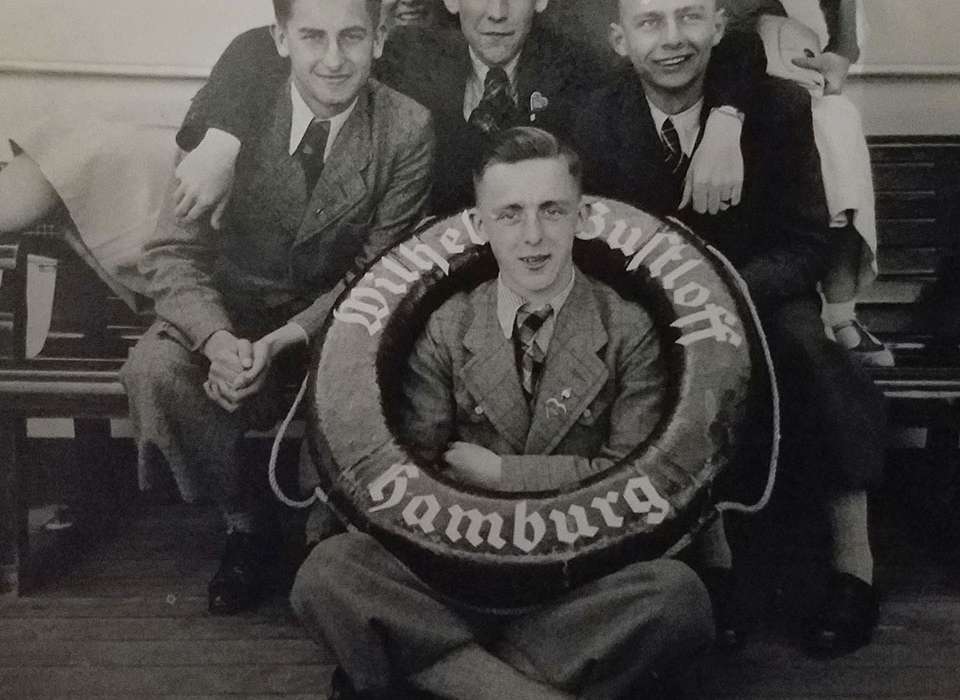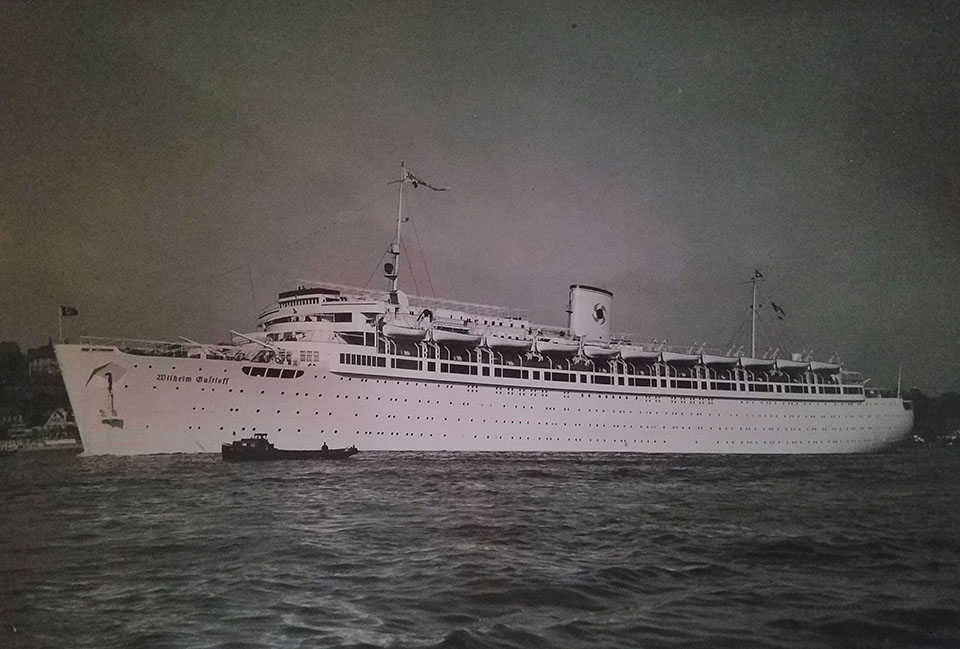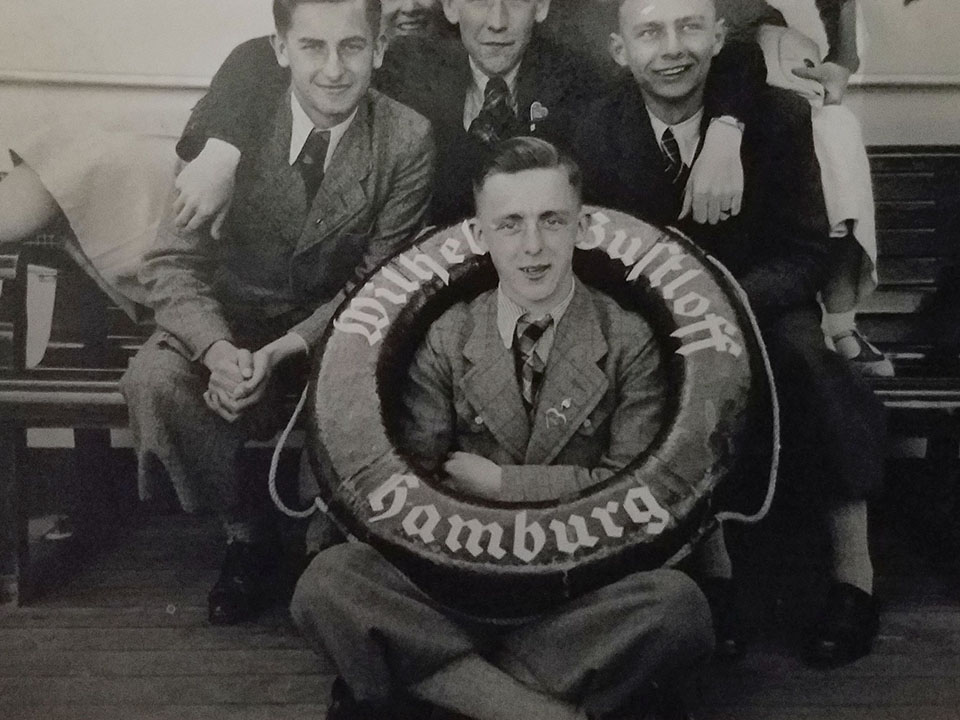World War II is filled with events that can only be described in superlatives: the biggest, the bravest, the fastest, and so on.
And then there is something else World War II is filled with: “worsts.”
Consider what happened to the German ship Wilhelm Gustloff on the evening of January 30, 1945, seventy-five years ago. Formerly a cruise liner for Hitler's "Strength Through Joy" program in the 1930's, and then a hospital ship during wartime, Wilhelm Gustloff was pulling different duty that long-ago night in the Baltic Sea. It was part of Operation Hannibal, the evacuation of German military personnel and civilian refugees from the ports of East Prussia, now cut off from Germany by the advance of Soviet armies deep into the province of East Prussia.
German refugees were on the road in the winter of 1944-45, great columns of men, women, and children, desperate to flee as the onrushing Soviets overran their homes. They were making for the coast, for the safety of the ports Pillau or Gotenhafen. Here, rumor had it, they would be evacuated to the west. The trek was a harrowing one, replete with sub-zero temperatures, blizzards, and Soviet air attacks. This was human misery on a grand scale, reminiscent of what had happened to Soviet civilians during the German invasion of 1941.
When they arrived in Pillau, these refugees found not salvation, but chaos. The last months of the Third Reich featured scenes of unimaginable confusion, and this was no exception. Nazi Party officials haggled with the Navy over who was in charge of Hannibal, about the precise start date, even about who was to be rescued first. The local “Reichs Defense Commissar,” Gauleiter Eric Koch, was an ardent Nazi who didn’t want to appear weak in the eyes of the Führer. He wanted the evacuation postponed as long as possible. Admiral Karl Dönitz felt that the earlier the evacuation took place, the better its chance of success, a reasonable assumption. When trains arrived from Danzig with the families of 500 high ranking Nazis in the civil administration, Koch wanted them prioritized for the evacuation ships, but Dönitz refused. While officials argued, refugees kept pouring into the port, until by mid-January, Pillau was bulging with some 100,000 desperate civilians.
Command squabbles delayed the departure of Wilhelm Gustloff until midday January 30, escorted only by a pair of torpedo boats. Even as it was preparing to depart the harbor, the ship was still picking up more human cargo, another 600 from the steamer Reval, for example. The ship, built to carry a few thousand people, was now bulging with some 7,000-10,000 people, including 4,000-5,000 children. The recorded numbers contradict one another, and we probably never will know how many people were on board the ship.
One thing is certain. Lying in wait in the dark waters of the Baltic Sea was the Soviet submarine S-13 under Captain Alexander Marinesko. As Wilhelm Gustloff steamed slowly to the west, Marinesko shadowed it, then, at 9 pm, fired a spread of four torpedoes. Three of them hit home, striking Wilhelm Gustloff on the bow, stern, and amidships. The jam-packed ship was soon a scene of horror, with explosions, fires, children blown overboard, passengers slipping and sliding on the icy deck, and tumbling into the sea. No help was at hand. Indeed, most of the ship’s actual crew was trapped in the forecastle, behind watertight doors that had locked automatically upon impact.
Not that it would have mattered much. Wilhelm Gustloff sank within an hour. Those who had not been killed by the initial blast or by the chaos on board after the attack froze to death in the icy Baltic. The dead numbered between 6,000-9,000. Once again, the figure depends on the initial figure for those on board. Choose either number, in fact, and the result is the same: even with 1,200 survivors picked up by rescue vessels, the sinking of Wilhelm Gustloff was the worst disaster in maritime history, at least four times bigger, in terms of human life, than the sinking of the Titanic.
Was it a war crime? Charges that Marinesko had violated the laws of war have arisen from time to time, but they’ve been difficult to sustain. He didn’t know he was looking at a refugee ship, and at any rate the presence on board of some 1,000 naval personnel, along with a couple of quad anti-aircraft guns, made Wilhelm Gustloff a legitimate target.
War crime or not, what happened to Wilhelm Gustloff was bad. In fact, we might say it was the worst.
Robert Citino, PhD
Robert Citino, PhD, is the former Samuel Zemurray Stone Senior Historian in the Jenny Craig Institute for the Study of War and Democracy.
Cite this article:
MLA Citation:
APA Citation:
Chicago Style Citation:







![Max Fuchs, New York City cantor, sings as Rabbi Sydney [sic] Lefkowitz, Richmond, VA, conducts the first Jewish services from Germany.](/sites/default/files/styles/max_650x650/public/2025-10/image1.jpg)



